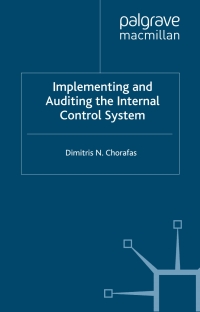Hello, This is the spreadsheet that my professor referenced in order to help me with correcting part B of the question.

How would I make the corrections my professor has suggested?

=$837,500/$5,043,750=16.7% a. Calculate the working capital, current ratio, and acid-test ratio for Tibbetts Company as of September 30, 2019. 1. Working Capital = Current Assets - Current Liabilities =$420,000$240,000=$180,000 2. Current Ratio = Current Assets / Current Liabilities =$420,000/$240,000=1.75 3. Acid-Test Ratio =( Cash + Marketable Securities + Accounts Receivable )/ Current Liabilities = ($48,000+$87,000+$129,000)/$240,000=1.1 b. Summarized here are the transactions/events that took place during the fiscal year ended September 30, 2020. Indicate the effect of each item on Tibbetts Company's working capital, current ratio, and acid-test ratio. Use + for increase, - for decrease, and (NE) for no effect. [Hint: It may be helpful to use the horizontal model or to record the journal entry(ies) for each item before considering the effects on liquidity measures.] CC Cupples, Cerri S I've highlighted the parts of B that are incorrect and will provide an example on how to work through part 1 to explain the logic for these comparisons: Credit sales amount to 360,000 : Debit Accts Rec (current/quick asset) 360,000 Credit sales revenue 360,000 The cost of goods sold was 234,000 Debit Cost of Goods Sold Expense 234,000 Credit Inventory (current asset) 234,000 After the journals are recorded, decide which part of these journals are relevant to Working Cap and both ratios. Since the current and quick asset of receivable increase exceeds the reduction to inventory (also a current asset), the transaction results in a net increase to current and quick assets of 126,000 ), which would result in an increase in all 3 cases. If this doesn't make sense, then try another approach and work through theoretical numbers. Assume current assets =400,000 and current liabilities =300,000; so working capital =400,000 300,000=100,000; so, taking the facts presented in the assignment for part 1 and apply the info from the JEs noted above: New WC =(400,000+360,000)(300,000234,000) =760,00066,000 =694,000 New working capital; this is an increase over the original working capital of 100,000 . The same logic should be applied to each individual part that is incorrect. =$837,500/$5,043,750=16.7% a. Calculate the working capital, current ratio, and acid-test ratio for Tibbetts Company as of September 30, 2019. 1. Working Capital = Current Assets - Current Liabilities =$420,000$240,000=$180,000 2. Current Ratio = Current Assets / Current Liabilities =$420,000/$240,000=1.75 3. Acid-Test Ratio =( Cash + Marketable Securities + Accounts Receivable )/ Current Liabilities = ($48,000+$87,000+$129,000)/$240,000=1.1 b. Summarized here are the transactions/events that took place during the fiscal year ended September 30, 2020. Indicate the effect of each item on Tibbetts Company's working capital, current ratio, and acid-test ratio. Use + for increase, - for decrease, and (NE) for no effect. [Hint: It may be helpful to use the horizontal model or to record the journal entry(ies) for each item before considering the effects on liquidity measures.] CC Cupples, Cerri S I've highlighted the parts of B that are incorrect and will provide an example on how to work through part 1 to explain the logic for these comparisons: Credit sales amount to 360,000 : Debit Accts Rec (current/quick asset) 360,000 Credit sales revenue 360,000 The cost of goods sold was 234,000 Debit Cost of Goods Sold Expense 234,000 Credit Inventory (current asset) 234,000 After the journals are recorded, decide which part of these journals are relevant to Working Cap and both ratios. Since the current and quick asset of receivable increase exceeds the reduction to inventory (also a current asset), the transaction results in a net increase to current and quick assets of 126,000 ), which would result in an increase in all 3 cases. If this doesn't make sense, then try another approach and work through theoretical numbers. Assume current assets =400,000 and current liabilities =300,000; so working capital =400,000 300,000=100,000; so, taking the facts presented in the assignment for part 1 and apply the info from the JEs noted above: New WC =(400,000+360,000)(300,000234,000) =760,00066,000 =694,000 New working capital; this is an increase over the original working capital of 100,000 . The same logic should be applied to each individual part that is incorrect








